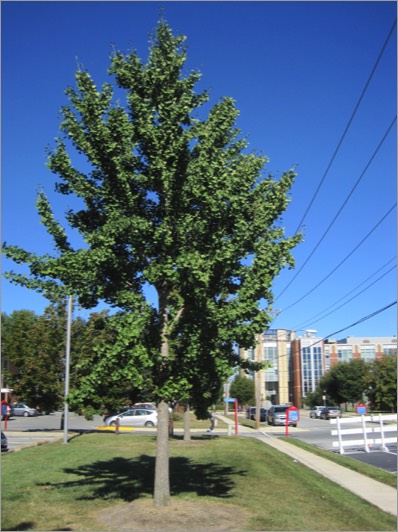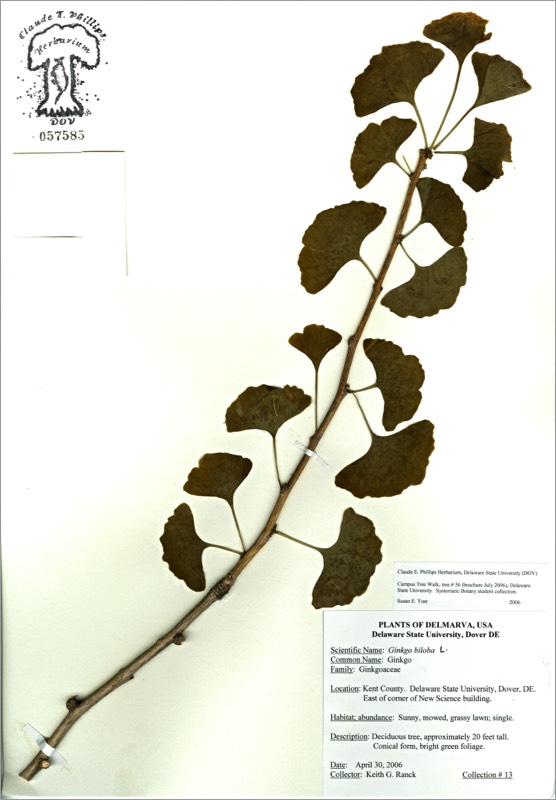*Ginkgo


*Ginkgo biloba
GINKGO
Ginkgoaceae
China
Location: map coordinates K-33 (southeast of Mishoe Science Building), N 39°11'9'' W 75°32'26''; and
T-17 (east of Loockerman Hall), N 39°11'6'' W 75°32'40''
Planting history: K-33: planting history presently unknown.
T-17: planted 5/6/10. Source: Willey Farms, DE. (Dr. S. Yost, USDA NIFA Capacity Building Grant funds).
Description:
*Non-native species (not native to Delaware)
GINKGO
Ginkgoaceae
China
Location: map coordinates K-33 (southeast of Mishoe Science Building), N 39°11'9'' W 75°32'26''; and
T-17 (east of Loockerman Hall), N 39°11'6'' W 75°32'40''
Planting history: K-33: planting history presently unknown.
T-17: planted 5/6/10. Source: Willey Farms, DE. (Dr. S. Yost, USDA NIFA Capacity Building Grant funds).
Description:
- large deciduous tree
- Ginkgo from Chinese Ginkyo for silver apricot; biloba = 2-lobed (referring to some of the leaves)
- also called maidenhair tree (from similarity of leaves to those of maidenhair fern, Adiantum)
- gymnosperm (non-flowering seed plant); more closely related to pines than to our other broad-leaved trees which are mostly angiosperms (flowering plants)
- “living fossil”; nearly identical to trees living ca 200 million years ago; the only surviving species in its family and order
- probably extinct in the wild; originally propagated from trees growing around Chinese monasteries
- oldest living tree probably well over 1,000 years old
- leaf with distinctive fan shape, golden-yellow color in fall; leaves of long shoots usually 2-lobed (hence the specific epithet “biloba”)
- dioecious (separate male and female trees); males with small green microsporangiate strobili producing pollen and swimming sperm; females with 2 naked ovules on a stem
- seed fruit-like; with fleshy, bad-smelling outer coat (butyric acid); produced only on female trees
- inner seed is edible, when roasted; in moderate quantities
- branches have short shoots, and long shoots
- leaf extract used as herbal remedy for mild memory loss (opens blood vessels, improves blood flow); also antioxidant
*Non-native species (not native to Delaware)


There are 2 labeled ginkgo trees.
HIT REFRESH TO START LOCATION GRAPHIC